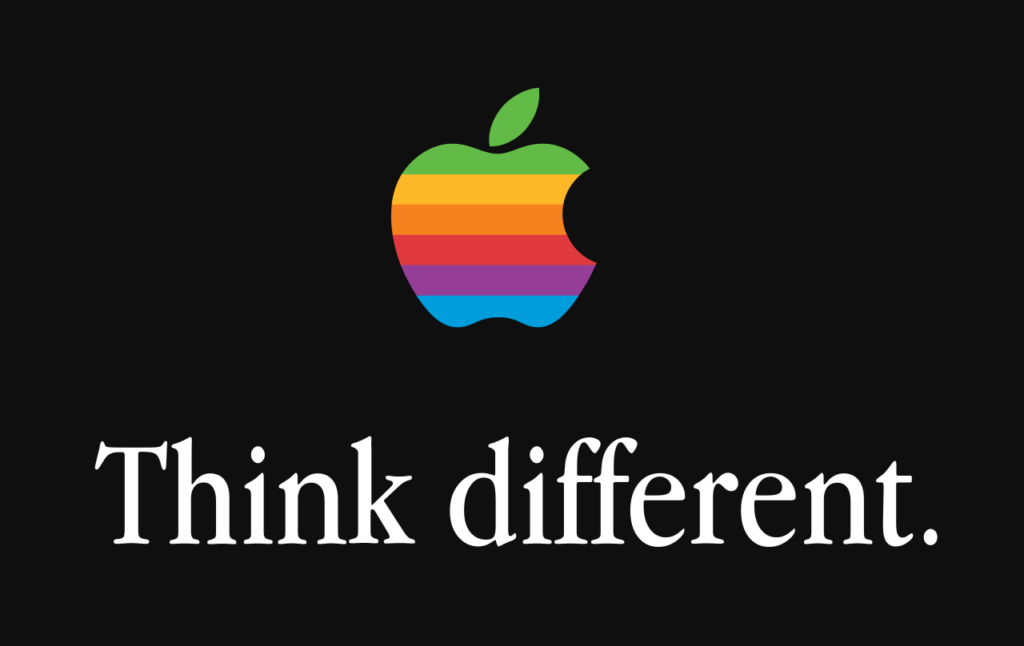Rebranding is the game-changer that can redefine your place in the market. As a CEO, there are many branding issues that can come to your attention. Before diving into the rebranding process, it’s essential to understand the various reasons that may prompt a company to rebrand. Rebranding can take various forms, depending on your company’s needs and goals, and the extent of the rebrand will depend on your specific goals, as well as the current state of your brand. Before embarking on your rebranding journey, there are several crucial steps to ensure a solid foundation. Once you’ve laid the groundwork, follow this comprehensive checklist to navigate the rebranding process.

Company Rebranding Checklist:
Forget business as usual. In our current era, rebranding is the game-changer that can redefine your place in the market. A strategic process that reshapes your brand identity and positioning to better resonate with your target audience, rebranding reflects your current values and helps to differentiate you from competitors.
According to a study by marq.com (2021), consistently presented brands see an average revenue increase of 10% – 20%. This highlights the potential financial benefits of a well-executed rebrand.
As a CEO, there are many branding issues that can come to your attention. You might find yourself with an outdated website, notice that your core offerings have changed, or realize your brand no longer aligns with your company’s vision. You might be out of touch with your current customers, or the Gen Z employees you hope to entice to work for you. These are some of the telltale signs that it’s time to consider a rebrand. Read on as I walk you through the essential steps of a successful rebranding initiative and provide you with a comprehensive checklist to ensure a seamless transition.

Understanding the Need for Rebrand
Before diving into the rebranding process, it’s essential to understand the various reasons that may prompt a company to rebrand. These include:
Market evolution:
As industries change and new trends emerge, your brand may need to adapt to stay relevant. Deloitte in 2020 reported that 87% of executives believe digital trends will disrupt their industries, underscoring the need for brands to evolve with the times.
Outdated image:
If your visual identity or messaging feels stale or no longer resonates with your target audience, it’s time for a refresh. A survey by Adobe (2019) found that “48 per cent of consumers say they are more likely to purchase from a brand with consistent branding across all channels, highlighting the importance of a modern, cohesive brand image.”
Repositioning:
Rebranding can help you tap into new markets, shift your focus, or change your perceived value proposition. According to a McKinsey (2019) study, companies that successfully reposition their brands can increase shareholder value by up to 10%, demonstrating the potential financial benefits of strategic repositioning.

Mergers and acquisitions:
When companies merge or acquire another business, rebranding is often necessary to create a cohesive identity. Deloitte (2019) reports that 70% of mergers and acquisitions fail to achieve their intended synergies, emphasizing the importance of a well-planned rebranding strategy in the context of M&A.
Recognizing these signs early on allows you to rebrand proactively, as opposed to in response to a crisis or missed opportunity. A study by Interbrand (2018) found that “proactive rebranding can lead to a 20% increase in brand value, highlighting the benefits of a proactive approach.
Types of Rebranding
Rebranding can take various forms, depending on your company’s needs and goals:
Full Rebrand:
A complete overhaul of your brand identity, including your logo, color palette, messaging, and positioning. This is suitable for companies undergoing a significant shift in direction or identity. According to a study by Siegel+Gale (2019), “full rebrands can lead to a 20% increase in revenue”, showcasing the potential impact of a comprehensive rebranding effort.
Brand Refresh:
A more subtle approach that focuses on updating specific elements of your brand while maintaining its essence. This can involve tweaking your visual identity, refining your messaging, or adapting to new market trends. A survey by Gartner (2020) found that 74% of CMOs have undertaken a brand refresh in the past two years, indicating the prevalence of this approach.
Additionally, rebranding can focus on visual elements (logo, color scheme, and imagery) or strategic components (messaging, target audience, and market position). A McKinsey report (2020) found that companies that align their brand strategy with their business strategy are 2.2 times more likely to achieve above-average growth, emphasizing the importance of a holistic approach to rebranding.
The extent of your rebrand will depend on your specific goals and the current state of your brand. Landor found in a 2019 study that “successful rebrands are 2.5 times more likely to have clear objectives and metrics”, highlighting the importance of setting well-defined goals for your rebranding initiative.
Pre-Rebranding Steps
Before embarking on your rebranding journey, there are several crucial steps to ensure a solid foundation:
- Conduct a Brand Audit
- Assess your current brand assets, market position, and audience perception to identify strengths, weaknesses, and areas for improvement. According to Forrester (2019), “companies that conduct regular brand audits are 33% more likely to achieve above-average revenue growth”, underscoring the value of a thorough brand assessment.
- Gather feedback from stakeholders, including employees, customers, and partners, to gain valuable insights. Deloitte (2020) found that “76% of executives believe employee engagement is a critical factor in a successful rebrand”, bringing light to the importance of involving internal stakeholders in the process.

2. Consider Legal Implications
- Research trademarks and copyrights to avoid potential infringement issues when developing new brand elements. CompuMark (2019) reports that “85% of businesses have experienced trademark infringement”, highlighting the importance of due diligence in the rebranding process.
- Consult with legal professionals to ensure your rebranding complies with relevant laws and regulations. According to a Thomson Reuters study (2020), “70% of companies have faced legal challenges related to their branding”, emphasizing the need for legal guidance during a rebrand.
3. Set Clear Objectives
- Define the goals and desired outcomes of your rebranding initiative. Siegel+Gale (2018) found that “companies with clear rebranding objectives are 3 times more likely to achieve above-average revenue growth”, showing the importance of setting well-defined goals.
- Align your objectives with your overall business strategy and vision. McKinsey (2020) reported findings that “companies that align their brand strategy with their business strategy are 2.2 times more likely to achieve above-average growth”, bringing light to the need for strategic alignment.
- Establish metrics to measure the success of your rebrand. A Landor study (2019) found that “successful rebrands are 2.5 times more likely to have clear objectives and metrics”, underscoring the importance of setting measurable goals.
The Rebranding Checklist
Once you’ve laid the groundwork, follow this comprehensive rebranding checklist to navigate the rebranding process:

- Develop a New Brand Strategy
- Revisit your mission, vision, and values to ensure they align with your new direction. According to Deloitte (2019), “mission-driven companies are 30% more likely to achieve above-average revenue growth”, highlighting the importance of a strong brand foundation.
- Define your unique value proposition and competitive advantages. A 2020 report by Gartner found that “companies with a clear value proposition are 2 times more likely to achieve above-average revenue growth”, emphasizing the need for differentiation.
- Identify your target audience and develop buyer personas to guide your branding efforts. A study by Salesforce (2019) found that “companies that use buyer personas are 2.5 times more likely to achieve above-average revenue growth”, elucidating the value of audience-centric branding.
- Create Brand Guidelines
- Establish clear guidelines for your new visual identity, including logo usage, color palette, typography, and imagery. Lucidpress in 2020 reported that “consistent brand presentation across all platforms increases revenue by up to 23%”, highlighting the importance of brand consistency.
- Develop a brand voice and tone that reflects your company’s personality and resonates with your target audience. A report by Sprout Social (2019) found that “86% of consumers say authenticity is a key factor in deciding which brands they like and support”, showing the importance of an authentic brand voice.
- Document these guidelines in a comprehensive brand style guide to ensure consistency across all touch points. A 2020 study by Demand Metric found that “organizations with a formal brand style guide are 3 times more likely to achieve above-average revenue growth”, underscoring the value of a well-documented brand identity.
- Design New Brand Elements
- Collaborate with a professional design team to create a logo that embodies your new brand identity. A 2019 study by Siegel+Gale discovered that “60% of consumers are more likely to purchase from a brand with a logo they recognize”, displaying the importance of a strong visual identity.
- Select colors, fonts, and imagery that align with your brand personality and evoke the desired emotional response. Adobe in 2018 reported that “color increases brand recognition by up to 80%”, showing the impact of color on brand perception.
- Develop a tagline or slogan that encapsulates your brand promise and differentiates you from competitors. A study by Red C (2020) found that “47% of consumers feel more connected to brands with a clear tagline”, displaying the value of a compelling brand message.
- Update Digital Assets
- Redesign your website to reflect your new brand identity and improve user experience. A study by Adobe (2020) discovered that “38% of users will stop engaging with a website if the content or layout is unattractive”, highlighting the importance of a visually appealing and user-friendly website.
- Update your social media profiles, including profile pictures, cover images, and bios. A Sprout Social report (2020) found that “75% of consumers say they will purchase from a brand they follow on social media over a competitor”, emphasizing the importance of a strong social media presence.
- Refresh your email templates, newsletters, and other digital marketing materials. Campaign Monitor reported in a 2019 study that “branded emails have a 29% higher open rate than non-branded emails”, underscoring the impact of consistent branding on email marketing success.

- Revamp Marketing Collateral
- Update business cards, letterheads, brochures, and other printed materials with your new branding. Demand Metric reports in a 2020 study that “organizations with consistently branded collateral are 3 times more likely to achieve above-average revenue growth”, showing the importance of cohesive offline branding.
- Ensure consistency across all marketing channels, including advertising, public relations, and events. A report by McKinsey (2019) found that “companies with a consistent brand experience across all touchpoints are 3 times more likely to achieve above-average revenue growth”, highlighting the value of a holistic branding approach.
- Consider eco-friendly and sustainable options when producing new collateral. A 2019 study by Nielsen discovered how “73% of global consumers say they would definitely or probably change their consumption habits to reduce their impact on the environment”, emphasizing the growing importance of sustainability in branding.
- Internal Brand Alignment
- Communicate the rebrand to your employees and provide training on the new brand guidelines. A Gallup study (2020) found that “companies with highly engaged employees outperform their competitors by 147%”, displaying the importance of employee buy-in during a rebrand.
- Engage employees in the rebranding process to foster a sense of ownership and enthusiasm. Deloitte in 2019 reported how “70% of employees who feel valued by their employer are more likely to embrace change”, highlighting the benefits of employee involvement in the rebranding process.
- Update internal documents—such as employee handbooks and onboarding materials—to reflect the new brand. A study by Jobvite found in 2019 that “22% of new hires leave their job within the first 45 days due to poor onboarding experiences”, emphasizing the importance of aligning internal materials with your new brand identity.

- Plan Your Launch
- Develop a comprehensive launch strategy to introduce your new brand to the world. A 2019 study by Landor reported that “successful rebrands are 2.5 times more likely to have a clear launch strategy”, bringing light to the importance of a well-planned brand rollout.
- Coordinate the timing of your rebrand rollout across all channels and touchpoints. A report by McKinsey in 2020 discovered that “companies with a coordinated launch strategy are 2 times more likely to achieve above-average revenue growth”, emphasizing the value of a synchronized brand launch.
- Consider hosting a launch event or campaign to generate buzz and engage your target audience. A 2019 study by EventMarketer reported how “74% of consumers say engaging with branded event marketing experiences makes them more likely to buy the products being promoted”, underscoring the impact of experiential marketing on brand engagement.
- Communicate Your Rebrand
- Inform stakeholders, including investors, partners, and suppliers, about the rebrand and its significance. A study by Edelman (2020) found that “64% of consumers say they are more likely to recommend a brand that communicates its purpose”, highlighting the importance of sharing your rebranding story with key stakeholders.
- Develop a PR strategy to announce your rebrand to the media and public. A Cision, in a 2019 report shared how “press releases with multimedia content receive 3 times more views than text-only releases”, showing the value of engaging visual content in your rebranding communications.
- Engage with your audience on social media and other channels to build excitement and anticipation. A 2020 study by Hootsuite found that “78% of consumers are willing to engage with a brand on social media if they have a positive experience”, underscoring the importance of active social media engagement during a rebrand.
Post-Rebranding Actions
Your rebranding journey doesn’t end with the launch. To ensure long-term success:
- Monitor your brand’s performance and gather feedback from customers, employees, and other stakeholders. A study by Bain & Company found that “companies that excel in customer experience grow revenues 4-8% above the market” (Bain & Company, 2019), displaying the importance of continuous brand performance monitoring.
- Continuously assess your brand’s relevance and make necessary adjustments to stay ahead of market trends. A report 2020 by Accenture discovered how “76% of executives agree that organizations need to dramatically re-engineer the experiences that bring technology and people together”, emphasizing the need for ongoing brand evolution.
- Celebrate your rebranding milestones and recognize the contributions of your team members. A Glassdoor study from 2019 shared the discovery that “companies with high employee engagement are 21% more profitable than those with low engagement”, bringing light to the value of employee recognition and celebration.
Case Studies: Successful Rebranding Stories
Many well-known companies have undergone successful rebrands, showcasing the power of a well-executed rebranding strategy:

- Old Spice: Transformed from a dated brand to a humorous, modern identity through a viral marketing campaign. The campaign resulted in a “107% increase in sales” (Procter & Gamble, 2011), demonstrating the impact of a successful rebrand on revenue growth.
- Apple: Streamlined its product line, introduced the iconic “Think Different” campaign, and repositioned itself as an innovative tech leader. The rebranding effort contributed to a “211% increase in stock price over a 5-year period” (Forbes, 2019), highlighting the long-term financial benefits of a strategic rebrand.
- Burberry: Shed its outdated image and embraced a modern, luxury brand identity through strategic collaborations and updated product lines. The rebrand led to a “24% increase in revenue over a 3-year period” (The Guardian, 2018), showcasing the potential of a successful luxury brand refresh.

These examples demonstrate how rebranding can revitalize a company, attract new audiences, and drive business growth.
Conclusion
Rebranding is not just about changing your logo or website, it’s a strategic initiative that can redefine your company’s identity, values, and market position. By following the steps outlined in this ultimate rebranding checklist and leveraging the insights from various studies and reports, you can navigate the process with confidence and emerge with a revitalized brand that resonates with your target audience and sets you apart from competitors.
Remember, rebranding is a journey, not a destination. It requires ongoing effort, consistency, and a willingness to adapt to changing market dynamics. But with the right strategy and execution, rebranding can be a powerful tool for driving growth.
